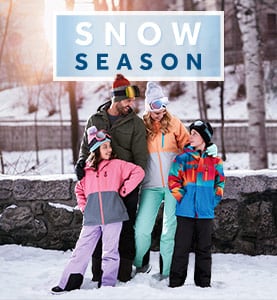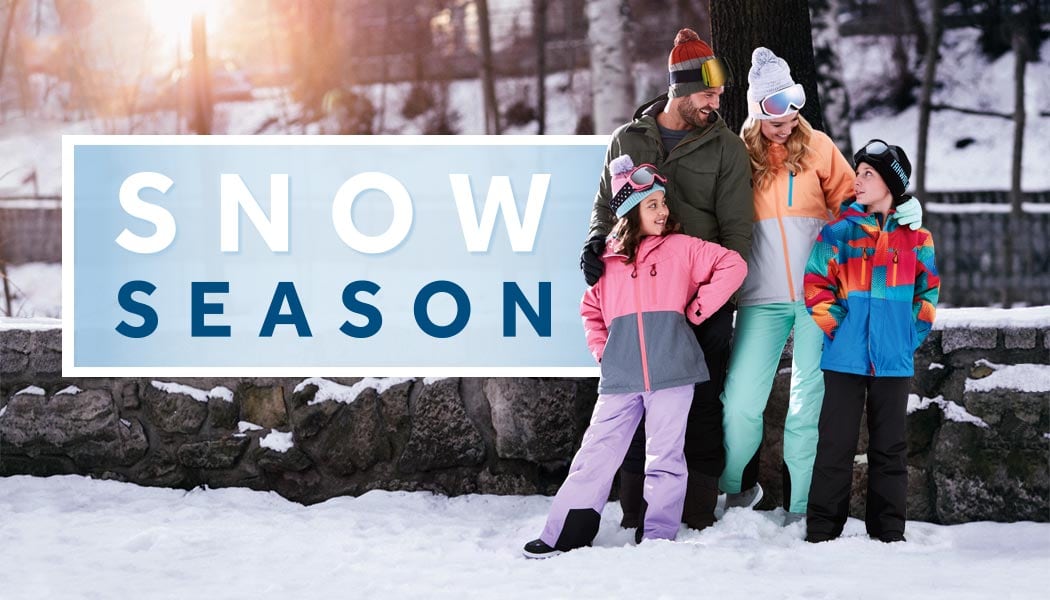How to layer your clothing for a trip to the snow
How to layer your clothing for a trip to the snow
Snow season is approaching and you know what that means! Yeah, it’s time for a trip to your favourite snow resort. Whether it’s for a week or a weekend, snow holidays take precision planning. Not just making sure you’re fitness levels are in tip top shape to carve up the slopes, but to ensure you have all the right snow clothing and accessories you need. A snow trip where you spend the time wet, cold and uncomfortable can ruin your time on the mountain. Learning how to layer clothing, having the right ski accessories and sturdy footwear can make the world of difference.
How to dress using layers
Comfort is key to having an enjoyable time in the snow. Once you get wet, it’s not long before you get cold and that’s the start of a downward spiral to complete misery. Although, a bright, sunny day on the mountain in the middle of the day combined with all that exercise, and you’ll soon start to overheat if you’ve dressed for artic-like conditions. Layering is the solution.
Choosing a base layer
Your base layer is like a warm hug for your body. It’s soft, comfortable and best made out of material that draws sweat away from your skin and reduces body odour. Long sleeve thermal tops and leggings help circulate your body heat, keeping your core body temperature stable and moves with your body for unrestricted flexibility.
Choosing a mid-layer
Mid-layers provide extra warmth on those days when the wind can chill you right through to your bones. A lightweight base layer hoodie is a good solution. These aren’t too bulky, so they will sit nicely under coats and snow jackets without making you feel like the Michelin Man.
Look for a hoodie with a zipper that can be left opened when the day starts to heat up, or zipped back up when the afternoon sun starts to disappear.
Choosing your outer layer
One of the most important clothing layers are your snow jacket and pants. You want snow clothing that’s going to protect from the wind, rain and snow, yet with breathable fabrics so you don’t work up a sweat. It’s important to understand the difference between water-resistant and waterproof.
Protecting your head and hands
Don’t forget your head and hands need protection too. In a report conducted by the British Medical Journal, 7-10% of body heat is lost through the head. Hair provides a little insulation so it’s advisable to wear a beanie. Choose from a huge range of colours and styles.
When it comes to keeping your hands warm, mittens are warmer than gloves, but don’t provide the manual dexterity you get with a good pair of gloves. Waterproofing and the correct size gloves are essential for ensuring your fingers stay toasty and dry.
Accessories
Sensible, sturdy snow boots should be teamed with thermal socks that feature good ankle and arch support. Snow goggles will protect your eyes from snow blindness, while the addition of a scarf ensures your neck, mouth and nose are kept warm.
Make a checklist and once you have all the gear you need, you’re ready to start packing!

